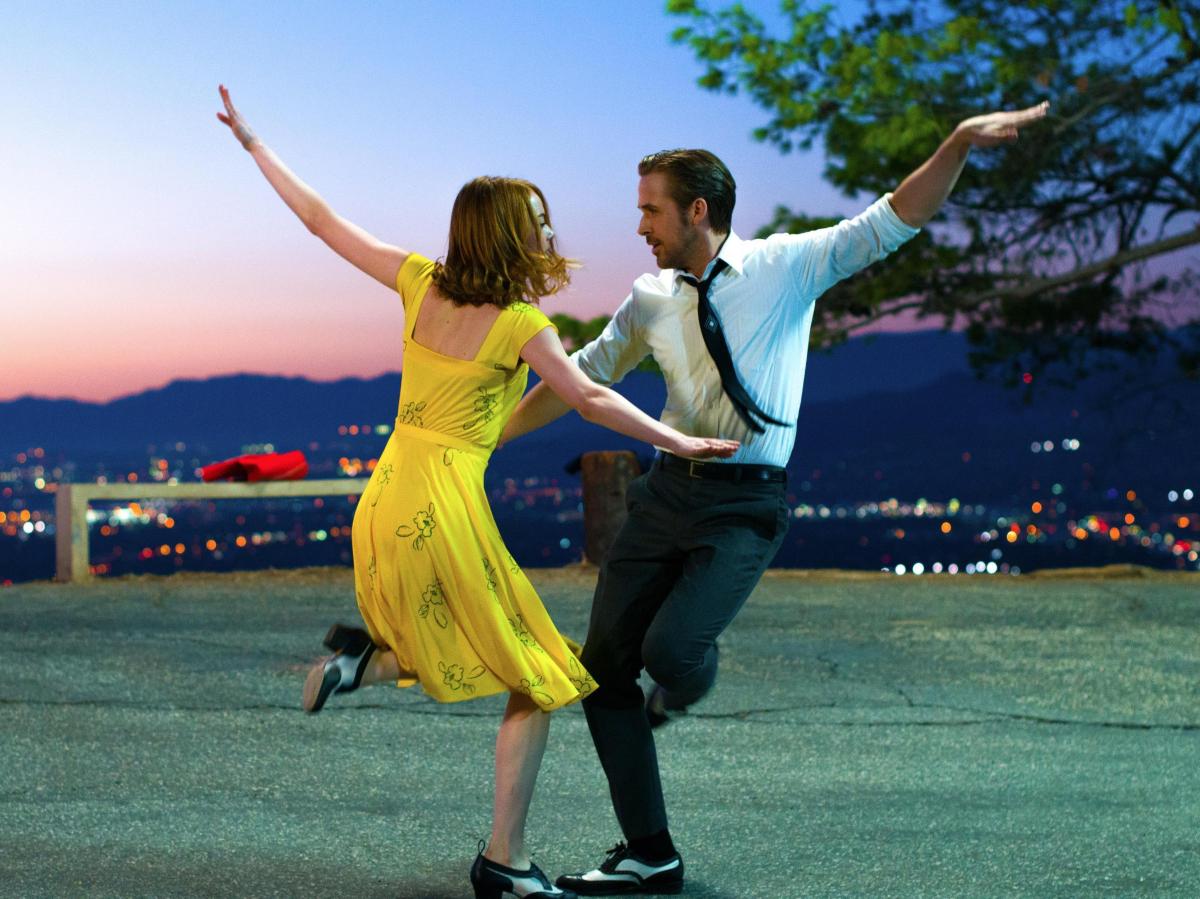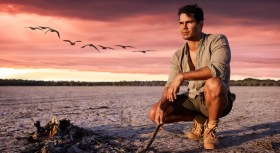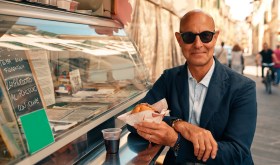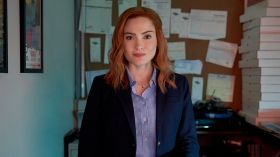Emma Stone and Ryan Gosling in La La Land. Image via Summit Entertainment.
Traffic. Sunshine. An ordinary winter day in Los Angeles, accepted wisdom would seem to dictate, until the masses behind the wheels of cars idling on the freeway burst out of their vehicles and into song. Colour characterises their outfits, often in blocks of primary hues, as well as their physical and vocal energy. As they sing La La Land’s bouncy first number, ‘Another Day of Sun’, brightness and enthusiasm radiates.
Affection reigns too, seemingly marking the feature as a happy ode to the kind of fare that commences in such a manner. In a matter of minutes, La La Land harks back to a time when musicals regularly danced across cinema screens, each angling to elicit smiling, swooning, swelling and soaring reactions. And yet, though the third feature from writer/director Damien Chazelle (Guy and Madeline on a Park Bench, Whiplash) steps into that territory, it’s an adoring but not an upbeat effort from start to finish. Rather, the film tells a tale in which glimpses of light and liveliness remain crucial, and tells it in a way that makes that plain – but makes the alternative just as resonant and immersive at the same time.
Chasing a passion; weathering the path that most days, weeks and years take: La La Land flits between the highs that make ordinary folk feel like jumping from their routine and unleashing their excitement, to the lows of unburdening pain alone, while knowing that the bulk of existence lurks somewhere in the middle. That’s Mia (Emma Stone, Irrational Man) and Sebastian’s (Ryan Gosling, The Nice Guys) bittersweet story as the movie relates it, peppered with enough tracks to earn its place in the musical genre, though never confining itself to the tradition it’s so evidently fond of.
Accordingly, as the pining protagonists meet in the aftermath of the opening motoring-inspired ditty, and then again as they pursue their dreams of becoming an actress and a club owner, respectively, sometimes they sing and dance to do what musicals do: express emotion. Sometimes, they gaze and contemplate to do what dramas do: the same. Chazelle blends both, and ‘50s-style jaunts, ’80s pop and modern jazz, just as he fuses hope and heartbreak, movement and patience, and vibrancy and restraint. Life may dwell between each of these extremes; however none is complete without seesawing from one to the other.
So it is that the central pair circle around each other, evolving from insults hurled from cars to abrupt encounters in bars to teasing and flirting at parties. So it is that, as they do so, they’re forced to reconcile the work, careers and businesses they desperately want with actually making a living in Los Angeles. Both offer a heady haze in different ways, encompassing the first flourishes of love and the thrill of success, as well as the drone of repetition and the malaise of the everyday. Mia takes Sebastian’s advice to swap soul-crushing auditions for writing her own one-woman play. Sebastian changes his own plans when an opportunity arises thanks to an old acquaintance (John Legend, Soul Men).
Simultaneously escaping into fantasy and reflecting reality, La La Land proves a big-hearted delight as well as delicate in depicting and traversing Mia and Sebastian’s many ups and downs, too. The juxtapositions continue in an effort that’s dream-like in style but ultimately melancholy in sentiment, as Chazelle clearly loves and understands the form, just as clearly plays with it, and yet isn’t slavishly beholden to the rules. Here, the classical and the modern combine in one package, as every single-take dance sequence shot by Linus Sandgren (Joy) and choreographed Mandy Moore (American TV’s Dancing with the Stars) demonstrates. In the process, the feature leaves as much room for tunes and tapped toes while the central pair move and groove by night on an empty street, as it does for energetic camerawork and editing in the thick of a starry party, and patience and pensiveness when belting out a song under a spotlight. Like many tributes, it’s an interpretation rather than a recreation.
It’s also ambitious filmmaking, and thankfully, Chazelle’s gambit pays off in the way that usually only happens in movies themselves. The balancing act he manages can’t be underestimated, be it in tone and pace, in reverence and irreverence, in the varying verve of different numbers, and in tasking his leads with reaching for the stars yet staying grounded. Stone and Gosling have rarely been better separately and together, not because they execute each big and small songs in a way that often captures their imperfect footwork and vocal contributions, but because they too express the hard act of juggling the many competing, contrasting and compromise-fuelled components.
In its narrative, emotional arc and technical feats, that’s the heart of La La Land, proving as evident in romantic moments against blue-lit evening skies, casual walk-and-talks, and jazz-scored montages that feel like they could be taken from other efforts as it is in the memorable, distinctive melange they form in tandem. Indeed, when Sebastian croons “is this the start of something wonderful, or one more dream that I cannot make true” – sometimes hopefully, sometimes mournfully – the film’s embrace and awareness of its ebbs and flows, and those of life and love that it strives to conjure, couldn’t be more winningly and wondrously apparent.
Rating: 5 stars out of 5
La La Land
Director: Damien Chazelle
US, 2016, 128 mins
Release date: December 26
Distributor: eOne
Rated: M
Actors:
Director:
Format:
Country:
Release:





